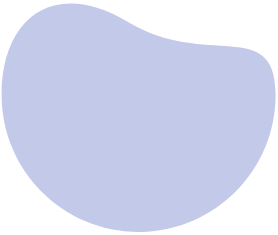Let’s face it: if you’re running a business today, you’re probably hearing a lot about “digital transformation” and feeling a bit of pressure to modernise.
Maybe you’re in manufacturing, retail, or energy, and you’re trying to figure out if the whole Internet of Things (IoT) or smart tech wave is worth your time—or your money.
If that sounds like you, let me break it down in plain terms, just like we did in the recent webinar I lead; What is IoT and Smart Tech and What Can It Do for Your Business?
Hosted by the Digital Transformation Flexible Fund, in partnership with Queens University Belfast & the William J. Clinton Leadership Institute.
I’m Martin Naughton, Managing Director at Galvia Digital. We specialize in IoT projects, Digital Transformation, Smart Tech, Custom Software Development, Proof of Concepts, Legacy Software Modernization, and Team Augmentation.
I’ll keep this simple, practical, and straight to the point. I’ll also be timecoding quotes in case you want to find where I speak about this in the recorded webinar available at the bottom of the article.
What Exactly is IoT?
IoT is simpler than it sounds. It stands for Internet of Things, which basically means connecting everyday objects to the internet to collect and share data. “All you have is an object or objects that are connected to the internet… anything could be IoT-enabled.” (12:56).
Your smartphone is IoT. The temperature sensors in a smart fridge? IoT. Even that doorbell camera that alerts you when someone’s at your door is IoT.
For businesses, the possibilities are huge: automated monitoring of machinery, smart inventory tracking, or even AI-driven insights from all that collected data.
But remember: “IoT on its own without sending data to the cloud or a server is no use,” (16:35). You need to actually use the data for it to be worth anything.
How Can IoT Transform Your Business?
IoT isn’t some overhyped buzzword; it’s a real tool that can solve everyday problems for businesses. Here’s some examples we talked about in the Webinar that could apply to you:
- Water Leak Detection
Imagine you run a chain of hotels. Water damage is expensive. By installing IoT leak sensors that can automatically shut off the main water supply when they detect a leak, you minimise both the damage and the repair costs. - Energy Management
If you’re managing an office building, you probably have rooms that stay heated even when no one’s in them. IoT sensors can monitor temperature and humidity, and automatically adjust heating and cooling systems. This isn’t just eco-friendly; it’s wallet-friendly. - Waste Management
Cities use IoT to make waste collection smarter. Instead of trucks driving around and checking every bin, sensors in waste bins send alerts when they’re full. This way, only the necessary bins get emptied, saving time and money. - Restaurant Refrigeration
In the food business, staying compliant with health and safety regulations is non-negotiable. Traditionally, chefs log temperatures manually, but that’s inefficient. IoT sensors can do this automatically, sending alerts if something’s off. “These temperature sensors can send a little text message… the chef can get a text message and save thousands of pounds worth of stock,” I shared during the session (52:03).
These examples just scratch the surface of what IoT can do. We also talked about structural health monitoring, traffic management using computer vision, and even optimizing inventory in retail settings. The possibilities are nearly endless, but the point is always the same: working smarter, saving money, and making your operations run more smoothly.
What Are the Business Benefits of IoT?
IoT is more than just a flashy trend. It delivers real, tangible benefits.
Cost Savings
Automation cuts down on manual work, reduces errors, and frees up your staff for higher-value tasks. “Sending people out anywhere to monitor something is costly… IoT allows remote monitoring, cutting down on labor and human error,” I emphasized (24:01).
Data-Driven Decisions
When you’re making decisions based on data, you’re more likely to make the right ones. “What gets measured gets managed,” I said (18:34). You’ll know if your energy use is out of control, or if a machine is about to fail before it does.
Operational Efficiency
Think of IoT as a way to streamline your entire operation. It makes you proactive rather than reactive, which is where real efficiency gains come from.
Real-Life Case Studies
Water Industry
Davy Simms from Photonic Measurements explained how they’ve used IoT to optimise water treatment plants. By monitoring nitrate levels and automating adjustments, they cut electricity costs by 27%. “Nitrate measurements in wastewater are critical to saving 27% of electricity costs,” Davey shared (35:13). That’s serious money.
McDonald’s
Even big names like McDonald’s use IoT. They’ve installed cameras that count customers to optimise staffing. “Instead of relying on point-of-sale data, they now use face-detection cameras to measure foot traffic,” I explained (22:46). The result? Faster service and happier customers.

What is the Digital Transformation Flexible Fund (DTFF)?
The Digital Transformation Flexible Fund (DTFF) is a grant program from the Northern Ireland government that covers 70% of your digital project costs, up to £20,000. The aim is to help local businesses modernize and stay competitive. The fund is particularly useful if you’re hesitant about spending your own capital on untested technologies.
Here’s the catch: to qualify, you need to be a micro or small business (under 50 employees), based in Northern Ireland, VAT-registered, and with a solid digital transformation plan. “You have to be micro or a small business… and you’ve got to be VAT registered,” I pointed out during the webinar (06:28).
This isn’t free money for the sake of it; you need to know what you’re doing.
Why Do You Need a Digital Strategy?
You need a plan. You shouldn’t just wing it. A digital transformation project without a plan is like trying to build a house without blueprints—it’ll collapse. As I mentioned in the webinar, “If you need to have a strategy before you get into kind of implementing any digital transformation… when there’s no strategy, it normally fails or it goes on for longer or it costs more” (01:46).
You need to know what problem you’re trying to solve, have a timeline, and appoint someone to drive the project. That’s your internal champion, the person who will own the project and keep things on track. Without this, you’re setting yourself up for delays and wasted money.
What Support is Available for Digital Transformation?
If you’re thinking, “Where do I even start?”—you’re not alone. Programs like GoSucceed offer free mentorship, bringing in experts to help you identify opportunities and set up a plan. “A common challenge is companies don’t know where to start… mentorship programs like GoSucceed can bring in experts to identify opportunities,” I said (53:21).
Galvia Digital is also here to guide you. We’re not about pushing tech for the sake of it. We help businesses with everything from proof of concept projects to full-scale IoT rollouts, always tailored to what you need. “We’re here to simplify your digital journey, not complicate it,” (41:49).
Watch the Full Webinar for More Insights
We’ve only touched on how IoT and smart technologies can transform your business, from saving money on energy to automating routine tasks. If you’re ready to make your operations more efficient and stay ahead of your competition, there’s a lot more to explore.
For a deeper dive, including practical steps for applying for the Digital Transformation Flexible Fund and more real-world case studies, watch the full webinar below. It’s loaded with actionable advice you won’t want to miss.
Ready to transform your business? Let’s get you the information you need to start that journey.


Let's Talk About How We Can Help You!
Sign Up To Our Newsletter to Get More Great Insights Straight to your Inbox!
Want to stay ahead in digital transformation, IoT, and software development?
Subscribe to Galvia Digital Digest for exclusive content that gives your business a competitive edge. From insider updates on our projects to actionable resources and tech strategies, we deliver the tools you need to innovate and grow. Sign up today and transform the way you think about technology!
Now onto the FAQ…
FAQ
What is IoT?
IoT stands for Internet of Things. It’s about connecting everyday objects to the internet for data collection and sharing. Think smart fridges, automated temperature sensors, or even inventory tracking devices. “It’s as simple as an object with sensors that sends data to the cloud.”(13:03).
How does the DTFF work?
The Digital Transformation Flexible Fund covers 70% of your project costs, up to £20,000. You pay the remaining 30%, and it’s only for eligible businesses. “You pay 30%, the government covers the rest, and you only get funding if you’re eligible.”
Who can apply for DTFF?
If your business has fewer than 50 employees, is VAT-registered, and is based in Northern Ireland, you can apply. Exceptions include agriculture and forestry. “You can’t be based in Dublin or in agriculture; there’s another fund for that.” (06:28).
What’s an example of a successful digital transformation?
Davey Simms shared how water plants cut electricity costs by 27% using IoT. “By automating data collection, they reduced costs and improved compliance,” Davey explained (35:13).
What support does Galvia Digital offer?
We help businesses with everything from developing custom IoT solutions to modernising legacy software. “We’re here to make your digital journey easier, not harder,” I emphasised (41:49).



Social Profiles